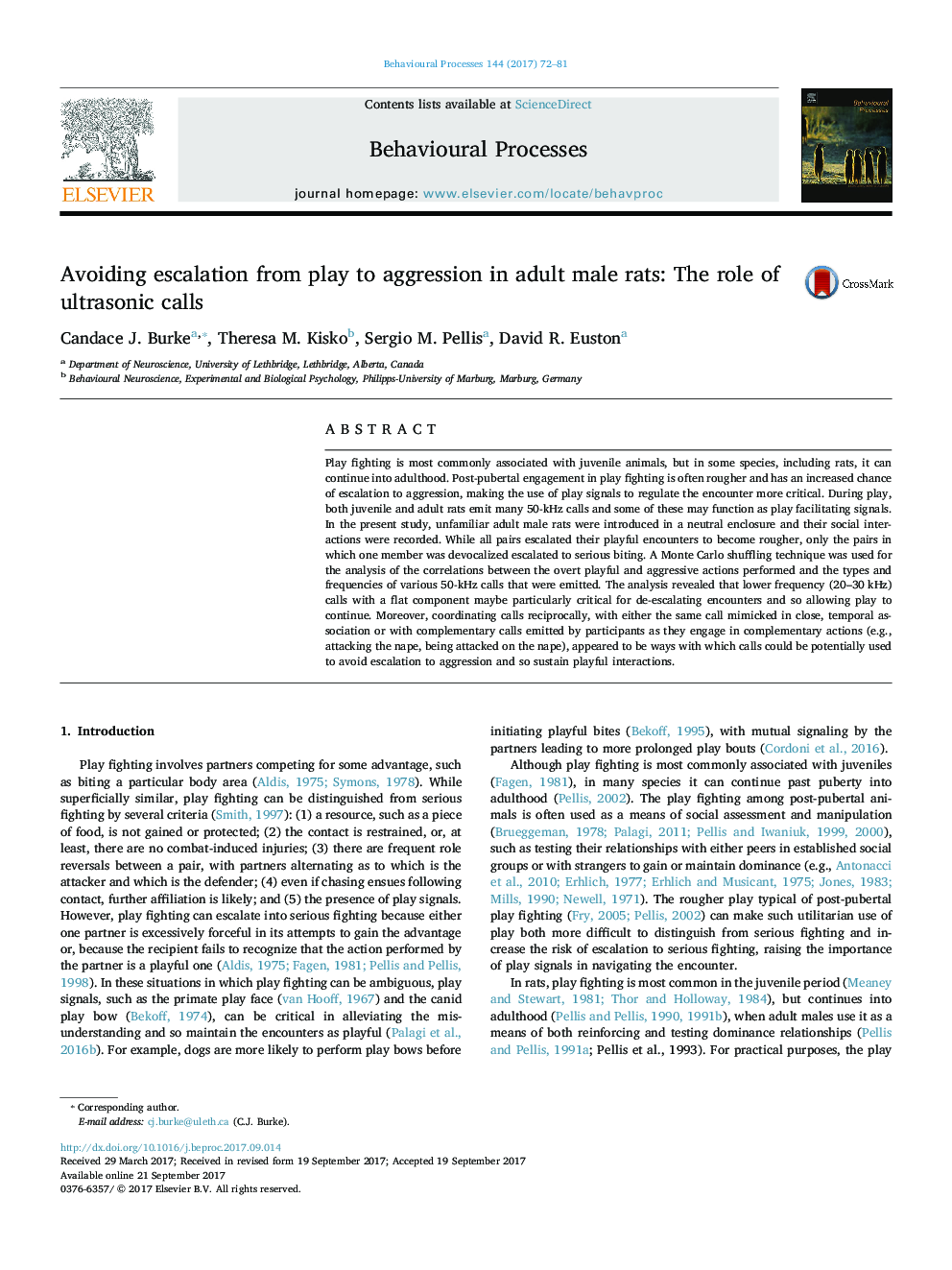| Article ID | Journal | Published Year | Pages | File Type |
|---|---|---|---|---|
| 5539721 | Behavioural Processes | 2017 | 10 Pages |
â¢Ultrasonic calls are used extensively in the playful interactions of rats.â¢Ultrasonic calls appear to be critical in coordinating social interactions in rats.â¢Flat type calls are important in de-escalating aggressive interactions.â¢Interacting with a devocalized partner invariably leads to serious aggression.â¢Calling reciprocally could be one mechanism by which to maintain play.
Play fighting is most commonly associated with juvenile animals, but in some species, including rats, it can continue into adulthood. Post-pubertal engagement in play fighting is often rougher and has an increased chance of escalation to aggression, making the use of play signals to regulate the encounter more critical. During play, both juvenile and adult rats emit many 50-kHz calls and some of these may function as play facilitating signals. In the present study, unfamiliar adult male rats were introduced in a neutral enclosure and their social interactions were recorded. While all pairs escalated their playful encounters to become rougher, only the pairs in which one member was devocalized escalated to serious biting. A Monte Carlo shuffling technique was used for the analysis of the correlations between the overt playful and aggressive actions performed and the types and frequencies of various 50-kHz calls that were emitted. The analysis revealed that lower frequency (20-30Â kHz) calls with a flat component maybe particularly critical for de-escalating encounters and so allowing play to continue. Moreover, coordinating calls reciprocally, with either the same call mimicked in close, temporal association or with complementary calls emitted by participants as they engage in complementary actions (e.g., attacking the nape, being attacked on the nape), appeared to be ways with which calls could be potentially used to avoid escalation to aggression and so sustain playful interactions.
